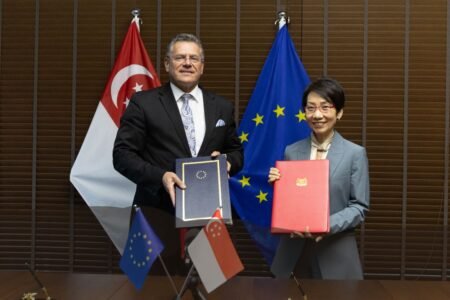(BRUSSELS) – The European Commission proposed Wednesday that temporary internal border controls under the Schengen Borders Code could be extended in response to increased security and terrorist risks.
Stronger procedural safeguards are also being introduced to ensure that border controls at internal borders remain an exception – a measure of last resort – and are used ‘only if necessary and proportionate, limiting the impact on free movement’.
The Commission has also published a Communication on the measures already taken to respond to security challenges at the external borders and within the Schengen area, and a Recommendation to Member States on how to better apply, if needed, the current rules on temporary border controls.
“The exceptional circumstances that we see now, such as the increased terrorist threat, have led us to propose a Schengen Border Code more fit for purpose in this new day and age,” said Commission Vice-President Frans Timmermans: “Member States should be allowed to act in an exceptional situation when confronted with serious threats to their public policy or internal security. At the same time, they should act only under strict conditions. This is how we secure free movement and promote security within Schengen.”
While the EU executive is keen to stress that Schengen remains one of the major achievements of European integration, it says it needs to respond to security concerns about a common area without border controls: “This is why we must do everything to preserve the careful balance between free movement and mobility on the one hand, and security on the other,” said Migration Commissioner Dimitris Avramopoulos. “And we can only achieve this through a coordinated and united Schengen framework.”
The Commission is proposing to adjust the applicable time limits of the Schengen Borders Code to up to one year (instead of six months), while at the same time introducing stricter procedural safeguards, including the obligation for EU Member States to assess if alternative measures could address the identified threat more efficiently and the submission of a detailed risk assessment.
Under today’s proposals, Member States will also be able to prolong controls if the same threat persists beyond one year and when ‘commensurate exceptional national measures within the territory, such as a state of emergency’, have also been taken to address this threat. Such prolongation would require a Recommendation of the Council, which would need to take into account the opinion given by the Commission, and would be strictly limited to 6 month periods with the possibility to prolong no more than three times up to a maximum period of two years.
The Schengen Borders Code has been amended on several previous occasions, to allow Member States to introduce temporary controls within foreseen time limits and conditions, while at the same time respecting and safeguarding the wider functioning of the Schengen system.
This time, the Commission has also taken the opportunity to invites Member States to agree to fully integrate Bulgaria and Romania into the Schengen area, with Croatia becoming a full member once all the criteria are met.
The Schengen area is the largest free travel area in the world. It allows more than 400 million EU citizens, as well as visitors, to move freely and goods and services to flow unhindered. Schengen is one of the major achievements of European integration which should be safeguarded and preserved.
Q&A: Preserving and strengthening the Schengen area








